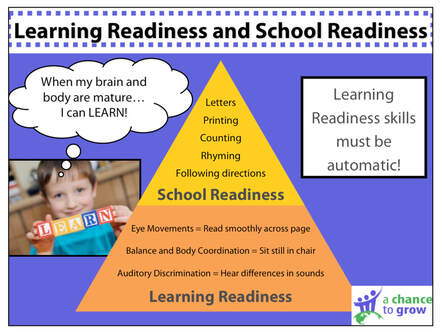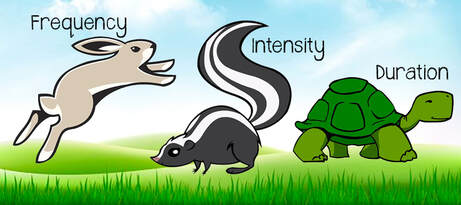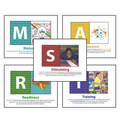How S.M.A.R.T. Works
Learning readiness is the foundation for school readiness. Learning readiness involves a child's neurological and physical readiness, both of which are typically achieved through infant and toddler movement. When normal brain/sensory stimulation takes place in those early stages of life, critical sensory systems are matured, which means that by the time a child enters school, the brain and body are ready and capable to learn.
|
For many reasons, children are arriving at school today without those sensory systems matured, or less matured than is optimal. The S.M.A.R.T. Program focuses on the maturing of those critical foundational systems through a series of fun and age-appropriate activities designed to recreate normal movements that may have been missed. These activities provide the necessary neurological stimulation to achieve learning readiness, which then allows the child to be fully capable to achieve school readiness. Students who have not fully developed learning readiness often struggle with academics or behavior.
Ensure that purposeful movement is a part of your curriculum and provide your students with the multi-sensory stimulation they need to learn and grow. |
The following skills must be done automatically by the body so the brain is capable of acquiring School Readiness:
S.M.A.R.T. developers drew from the latest brain research and a variety of developmental programs and activities in order to create the purposeful, enriching environment you will see in the S.M.A.R.T. program. The benefits of S.M.A.R.T. are provided through a frequency, intensity and duration of stimulation greater than what normally occurs in child development.
- Letter recognition, printing ability, counting, identifying rhymes and following directions.
- Mature eye movements so the eyes move smoothly across a page while reading
- Mature balance and coordination in order to sit upright (and comfortably) while seated
- Mature auditory discrimination to be able to hear the subtle difference between similar sounds
S.M.A.R.T. developers drew from the latest brain research and a variety of developmental programs and activities in order to create the purposeful, enriching environment you will see in the S.M.A.R.T. program. The benefits of S.M.A.R.T. are provided through a frequency, intensity and duration of stimulation greater than what normally occurs in child development.
|
Want to learn more about S.M.A.R.T.'s impact on learning? Consider attending a S.M.A.R.T. Workshop or a S.M.A.R.T. Pre-K Workshop. Over 7,000 educators have already implemented S.M.A.R.T. at more than 300 schools nationwide, with many of them receiving hands-on mentoring from our experienced instructors. Become a S.M.A.R.T. Teacher and transform your classroom into a playful atmosphere, mature your student's brains and bodies, and help them reach their full academic potential.
|



